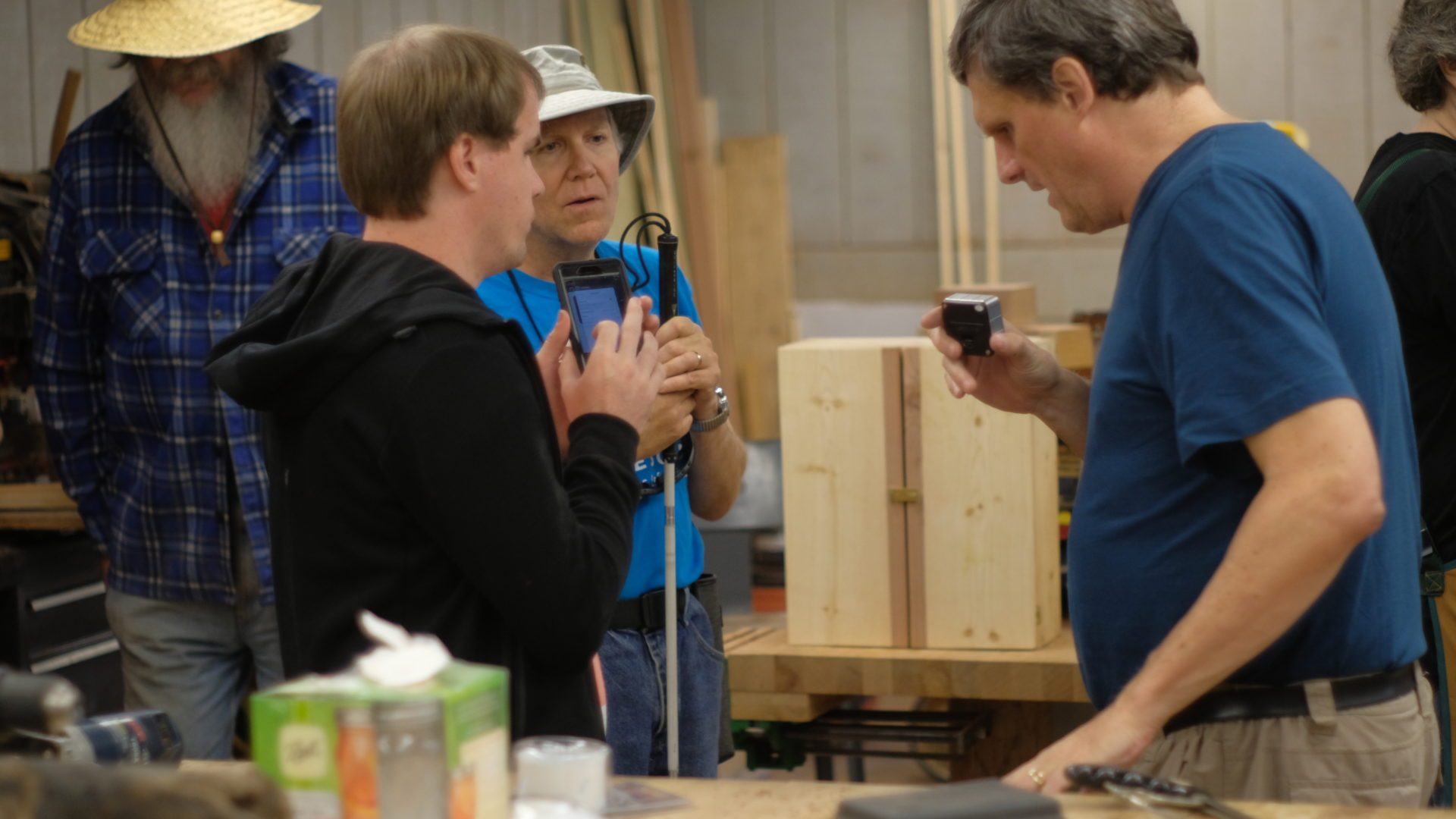Instructors should keep in mind that their lesson plans have a big impact on the level of control a student has over their learning path. Allowing a student control is empowering and builds confidence. But allowing them too much control, before the foundations of safety and shop etiquette are laid, can become problematic if they threaten to undermine confidence.
Blind woodworking instructors use the control principle in many different ways. Some blind instructors let students jump right into power tools, while others prefer to start with small hand tools. Hand tools allow students immediate freedom, but it can take longer for them to see results from their efforts in the form of completed projects. Power tools create more immediate results, but for novice students should be deployed in conjunction with contraints, like jigs and stops.
Sometimes instructors will have all students make the same project, other times a student might be allowed to direct their own efforts. Each direction has its benefits, but whatever the level of control you choose to allow your students, be sure you can provide the required support. More freedom might actually entail more supervision, and higher student-teacher ratios, for example. Less freedom might be formulaic for a student, but can also allow them to work with less oversight.
In the video below, a student focuses on self directed learning with a router. The instructor ensured that student understood the risks and what practices were unsafe. Then the teacher made that the necessary resources available, and relinquished control to the student.

Eric, you are doing some good work here. We will be following this page.